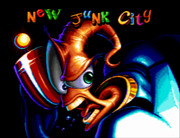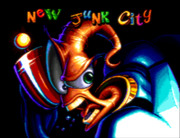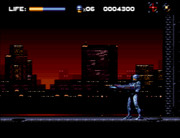I’ve manage to incorporate regular Glow (no trails) shader with GTU instead of Torridgristle’s Glow.
And the result is very good.
shaders = 10
shader0 = "shaders_slang\crt\shaders\gtu-v050\pass1.slang"
scale_type0 = source
scale0 = 1.0
float_framebuffer0 = true
shader1 = "shaders_slang\crt\shaders\gtu-v050\pass2.slang"
scale_type_x1 = viewport
scale_x1 = 1.0
scale_type_y1 = source
scale_y1 = 1.0
filter_linear1 = true
float_framebuffer1 = true
shader2 = "shaders_slang\crt\shaders\gtu-v050\pass3.slang"
scale_type2 = viewport
scale_2 = 1.0
filter_linear2 = false
shader3 = shaders_slang\misc\image-adjustment.slang
filter_linear3 = "true"
shader4 = shaders_slang/crt/shaders/glow/linearize.slang
filter_linear4 = false
srgb_framebuffer4 = true
shader5 = "shaders_slang\reshade\shaders\blendoverlay\blendoverlay.slang"
textures = "overlay"
overlay = "textures\grayscale-slotmask.png"
filter_linear5 = false
scale_type5 = viewport
srgb_framebuffer5 = true
alias5 = "CRT_PASS"
shader6 = shaders_slang/crt/shaders/glow/threshold.slang
filter_linear6 = false
srgb_framebuffer6 = true
shader7 = shaders_slang/crt/shaders/glow/blur_horiz.slang
mipmap_input7 = true
filter_linear7 = true
scale_type7 = source
scale7 = 0.25
srgb_framebuffer7 = true
shader8 = shaders_slang/crt/shaders/glow/blur_vert.slang
filter_linear8 = true
srgb_framebuffer8 = true
shader9 = shaders_slang/crt/shaders/crt-hyllian-glow/resolve2.slang
filter_linear9 = true
parameters = "compositeConnection;signalResolution;signalResolutionI;signalResolutionQ;noScanlines;tvVerticalResolution;blackLevel;contrast;intensity;LUTWidth;LUTHeight;OverlayMix;GLOW_WHITEPOINT;GLOW_ROLLOFF;BLOOM_STRENGTH;SOURCE_BOOST;ia_GRAIN_STR"
compositeConnection = "0.000000"
signalResolution = "160.000000"
signalResolutionI = "83.000000"
signalResolutionQ = "25.000000"
noScanlines = "1.000000"
tvVerticalResolution = "250.000000"
blackLevel = "0.030000"
contrast = "1.000000"
intensity = "0.000000"
LUTHeight = "4.000000"
LUTWidth = "6.000000"
OverlayMix = "0.350000"
GLOW_WHITEPOINT = "1.000000"
GLOW_ROLLOFF = "1.500000"
BLOOM_STRENGTH = "0.350000"
SOURCE_BOOST = "1.150000"
ia_GRAIN_STR = "6.000000"
Here is the comparison between my previous shader and this one:
Previous || Current
 ||
|| 
The only thing I couldn’t do is to combine ‘ntsc-color’ (for PS1 games) and ‘image-adjust’ shaders in one shader chain. The image became broken when those two are together. (
UPD:
Please mind that I’m using this custom grayscale-dotmask texture
For those who want to use default texture included with shaders you might need to adjust ‘OvelayMix’










